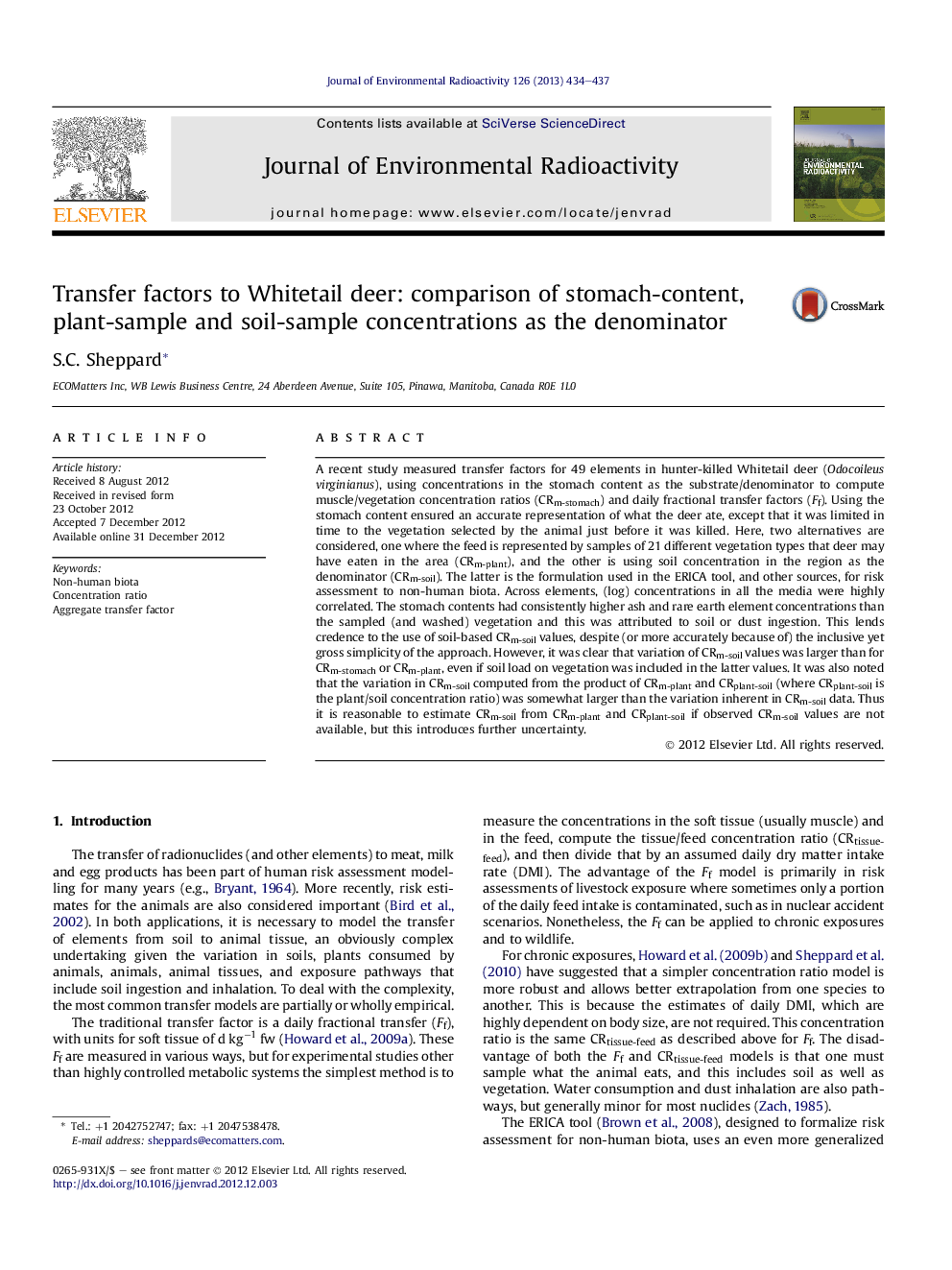| کد مقاله | کد نشریه | سال انتشار | مقاله انگلیسی | نسخه تمام متن |
|---|---|---|---|---|
| 8083438 | 1521607 | 2013 | 4 صفحه PDF | دانلود رایگان |
عنوان انگلیسی مقاله ISI
Transfer factors to Whitetail deer: comparison of stomach-content, plant-sample and soil-sample concentrations as the denominator
دانلود مقاله + سفارش ترجمه
دانلود مقاله ISI انگلیسی
رایگان برای ایرانیان
موضوعات مرتبط
مهندسی و علوم پایه
مهندسی انرژی
انرژی هسته ای و مهندسی
پیش نمایش صفحه اول مقاله

چکیده انگلیسی
A recent study measured transfer factors for 49 elements in hunter-killed Whitetail deer (Odocoileus virginianus), using concentrations in the stomach content as the substrate/denominator to compute muscle/vegetation concentration ratios (CRm-stomach) and daily fractional transfer factors (Ff). Using the stomach content ensured an accurate representation of what the deer ate, except that it was limited in time to the vegetation selected by the animal just before it was killed. Here, two alternatives are considered, one where the feed is represented by samples of 21 different vegetation types that deer may have eaten in the area (CRm-plant), and the other is using soil concentration in the region as the denominator (CRm-soil). The latter is the formulation used in the ERICA tool, and other sources, for risk assessment to non-human biota. Across elements, (log) concentrations in all the media were highly correlated. The stomach contents had consistently higher ash and rare earth element concentrations than the sampled (and washed) vegetation and this was attributed to soil or dust ingestion. This lends credence to the use of soil-based CRm-soil values, despite (or more accurately because of) the inclusive yet gross simplicity of the approach. However, it was clear that variation of CRm-soil values was larger than for CRm-stomach or CRm-plant, even if soil load on vegetation was included in the latter values. It was also noted that the variation in CRm-soil computed from the product of CRm-plant and CRplant-soil (where CRplant-soil is the plant/soil concentration ratio) was somewhat larger than the variation inherent in CRm-soil data. Thus it is reasonable to estimate CRm-soil from CRm-plant and CRplant-soil if observed CRm-soil values are not available, but this introduces further uncertainty.
ناشر
Database: Elsevier - ScienceDirect (ساینس دایرکت)
Journal: Journal of Environmental Radioactivity - Volume 126, December 2013, Pages 434-437
Journal: Journal of Environmental Radioactivity - Volume 126, December 2013, Pages 434-437
نویسندگان
S.C. Sheppard,